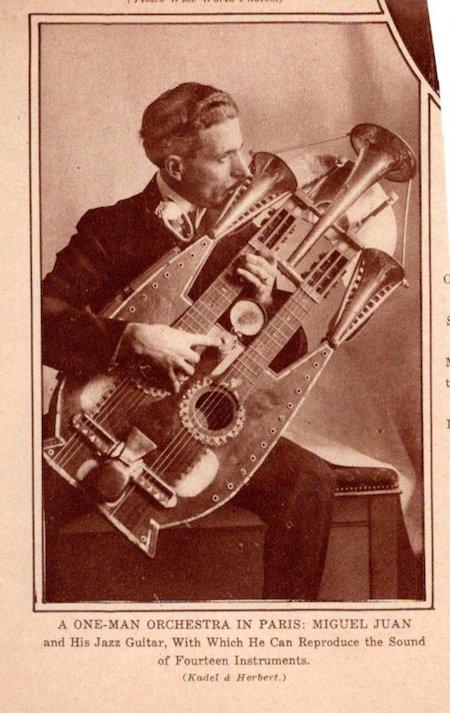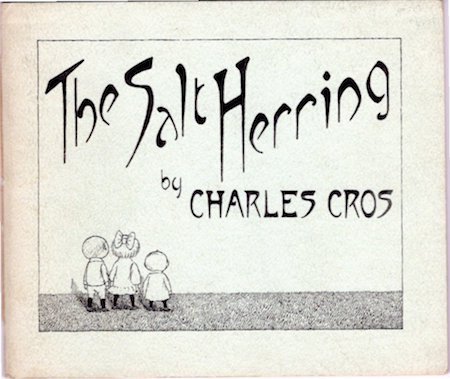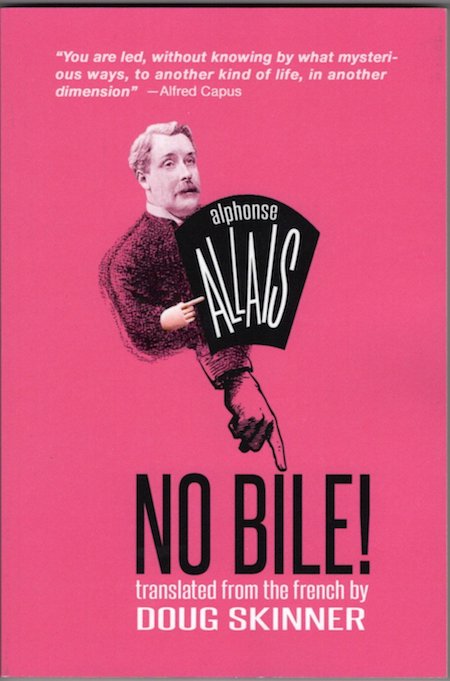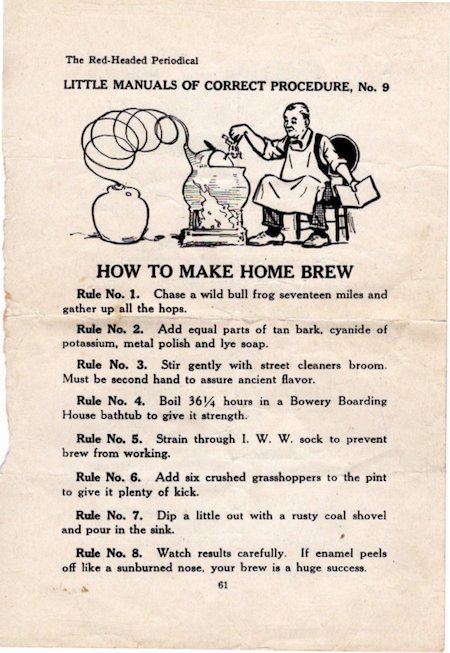
Gelett Burgess’s story “The Man Who Lived Backward” (Blue Book Magazine, January 1946) uses anagrams in a way I haven’t seen before. The story is, as the title warns us, about a man who lived backward, aging into an infant. The man is named Levi Wicet, and we are informed that the men in the family are always named with anagrams of Levi: Viel, Ivel, Eliv, Ilev, Elvi, and, of course, Evil and Vile (the last two pronounced “Eveel” and “Veelay”). Burgess’s systematic enumeration omits one possibility, leaving it to the reader to figure out the anagram “Live Twice.”
Mr. Wicet’s peculiar condition was apparently due to a strange man (“I could imagine him playing the role of Mephistopheles in Faust“), known either as Dr. Santa or Elvid.
Once Burgess establishes the use of anagrams, he amuses himself by inventing names that mock the implausibility of his plot. Levi Wicet adopts a number of synonyms: Lei Felsa, Eli Busgo, and Eli Drauf. He marries a woman who takes the last name of Keaf. Our narrator hears the story from a gruff and sarcastic Hungarian named Dr. Kojer. We not only have an unreliable narrator, but one who boasts about it with recreational linguistics.
(Posted by Doug Skinner. The illustration is by Burgess, from his “helter-skelter rigamarole” from 1909, Lady Méchante.)
Tags: Literature
July 17th, 2018 · Comments Off on Children’s Card Games (239)

“Les Plus Beaux Tableaux du Monde” (“The Most Beautiful Paintings in the World”) was published by F. Nathan, in Paris. There’s no date. It’s identified as a “Jeu des Families”: a game in which the players collect four of a kind (a “family”), like the American game Authors.
Twelve painters make the cut (with their French spellings): Léonard de Vinci, Albert Dürer, Raphaël Sanzio, Hans Holbein le jeune, Tiziano Vecellio dit le Titien, Pierre-Paul Rubens, Antoine Van Dyck, Rodriguez de Silva y Velasquez, Esteban Murillo, François Boucher, Thomas Gainsborough, and Rembrandt Van Ryn.
(Posted by Doug Skinner)
Tags: Card Games

An old scrapbook of musical instruments yielded this interesting picture of Juan Miguel and his “Jazz Guitar.” A Google search turned up nothing. It’s hard to believe that the elegant Juan and his remarkable instrument disappeared without a trace, but these things happen.
(Posted by Doug Skinner)
Tags: Music · Mysteries
July 4th, 2018 · Comments Off on The Salt Herring
I’m now translating the comic monologues of Charles Cros (1842-1888), and am consequently unraveling the various versions of his first one, Le hareng saur. It’s not only one of Cros’s most popular poems, still dutifully recited by French schoolchildren, but one of the few translated into English. Most English readers, if they know Cros at all, know him for “The Salt Herring.”

This is mostly due to Edward Gorey’s illustrated version, first published in a limited edition in 1971, and subsequently included in his collection Amphigorey Too. Tammy Grimes also recorded it on her album Gorey by Grimes.
Gorey credits the English translation to Alphonse Allais, and it’s included in François Caradec’s edition of Allais’s complete work. There seems to be a problem, though.
Paul Allais (Alphonse’s brother) noted in 1880 that Alphonse read an English version to the Hydropathes, a group of bohos devoted to writing poetry and avoiding water, which included both Cros and Allais. The Irish writer George Moore included a translation in his book Memoirs of My Dead Life, and it’s often assumed that he got it from Allais..
However, Moore never mentions either Allais or Cros, but credits the poem to the composer Ernest Cabaner, who did indeed set it to music. Furthermore, he gives slightly different versions in the various editions of his Memoirs (1906, 1923, and 1926), which leads me to believe that he was the one who translated it. Gorey used the 1926 version.
Cros himself published two versions of the poem, one in 1872 and one in 1880; it was the latter that became popular. Moore’s translation is freely based on that one; for some reason, though, he omitted the first three lines.
Harold B. Segel, in his book Turn-of-the-century Cabaret (1987), assumes that Allais read to the Hydropathes from Moore’s book, which seems unlikely, since the reading was in 1880, Allais died in 1905, and Moore’s book came out in 1906.
Here, at any rate, is Moore’s first version:
THE SONG OF THE “SALT HERRING”
He came along holding in his hands dirty, dirty, dirty,
A big nail pointed, pointed, pointed,
And a hammer heavy, heavy, heavy,
He propped the ladder high, high, high,
Against the wall white, white, white,
He went up the ladder high, high,
Placed the nail pointed, pointed, pointed,
Against the wall—toc! toc! toc!
He tied to the nail a string long, long, long,
And at the end of it a salt herring dry, dry, dry,
Then letting fall the hammer heavy, heavy, heavy,
He got down from the ladder high, high, high,
Picked up the ladder and went away, away, away.
Since then at the end of the string long, long, long,
A salt herring dry, dry, dry,
Has swung slowly, slowly, slowly.
Now I have composed this story simple, simple, simple,
To make all serious men mad, mad, mad,
And to amuse little children tiny, tiny, tiny.
(Posted by Doug Skinner)
Tags: Alphonse Allais · Literature
June 18th, 2018 · Comments Off on No Bile!

No Bile! is now available from Black Scat Books! This is my 8th translation of the peerless French proto-dadaist Alphonse Allais (1854-1905). This collection of what he called his “anthumous works” includes love stories, revenge stories, short-shorts, and unclassifiable prose, all affronting the reader with startlingly modern black humor, imagination, and wordplay. Among the highlights are “Absinthes,” an internal monologue about the effects of the Green Fairy; “Poor Césarine!”, a grisly tale of obsessive love; and “A Good Society,” which proposes collecting used matches for the poor. Translated, annotated, and illustrated by Doug Skinner. With six extra stories! Available from Black Scat Books or Amazon.
I also note Black Scat Books: A Bibliography, compiled by Grace Murray, and published by JEF Books (The Journal of Experimental Fiction). Black Scat has been going now for six years, under the editorship of the intrepid Derek Pell (aka Norman Conquest), out in the wilds of California. Available from JEF or from Amazon.
(Posted by Doug Skinner)
Tags: Alphonse Allais · Literature
June 11th, 2018 · Comments Off on How to Make Home Brew
I found this tear sheet in an old copy of Treasure Island. The header reads “The Red-Headed Periodical”; a search only yields one hit, as a subtitle to Ziff’s Magazine, a joke magazine published by William B. Ziff. So maybe that’s where it came from.
Here’s the recipe, for those summer parties.

(Posted by Doug Skinner)
Tags: Dietary Mores
June 5th, 2018 · Comments Off on Children’s Card Games (238)

We have another edition of “Authors.” This one has no indication of date or publisher; it comes in a sober black box, with faint gold lettering identifying it as “The Game of Authors,” and promising “Playing Card Quality.” Each author is given a halftone portrait and a simple red border. The roster here, in addition to Lowell, is: Longfellow, Bryant, Hawthorne, Emerson, and Irving.
(Posted by Doug Skinner)
Tags: Card Games
May 8th, 2018 · Comments Off on Bulletin (39)
My next translation of that peerless French humorist of the Belle Époque, Alphonse Allais, will be published by Black Scat Books this summer. This one is No Bile, from 1893.
My horror story in sonnets, “The Werechurch,” will make its appearance in Dagger Magazine this summer too. It may give you nightmares.
A choice selection of my drawings and other works on paper will be fastened to the wall of the Mothership, the multi-ineffable space Paul McMahon runs in Woodstock, at 6 Hillcrest Avenue. There will be drawings, comics, illustrations, scores, index cards, and rubber stamp stereoscopy. The opening is May 17, from 6 to 8, and everything comes down the 22nd.
Since I contributed to R. Crumb’s delightful magazine Weirdo, back in the day, I will be represented in Jon B. Cooke’s new book The Book of Weirdo, out later this year from Last Gasp.
My ukulele classes resume on Monday nights at the Jalopy Theatre, in Brooklyn. Uke I is at 7:00 and Uke II at 8:00.
(Posted by Doug Skinner)
Tags: Bulletins
April 22nd, 2018 · Comments Off on Children’s Card Games (237)

This deck came to me incomplete, with no indication of title, date, or maker. The cards show Jumbo and other animals, including Billy Bear and Dr. Lion, in various games, recreations, and predicaments. I assume it’s from the UK, since they play cricket. In this card, Jumbo has apparently neglected his studies.
(Posted by Doug Skinner)
Tags: Card Games
April 15th, 2018 · Comments Off on The Equiliteral Tercet
Another new verse form: the equiliteral tercet. Like its geometrical model, the equilateral triangle, it’s composed of three equal parts: three lines of three words, each with three letters. It need not rhyme, but these three examples do:
Old men say
Now it’s day
Cut the hay
Sty for pig
Fly for fig
Tie for gig
Did our cow
Get ill now
Why and how
(Posted by Doug Skinner)
Tags: Literature








